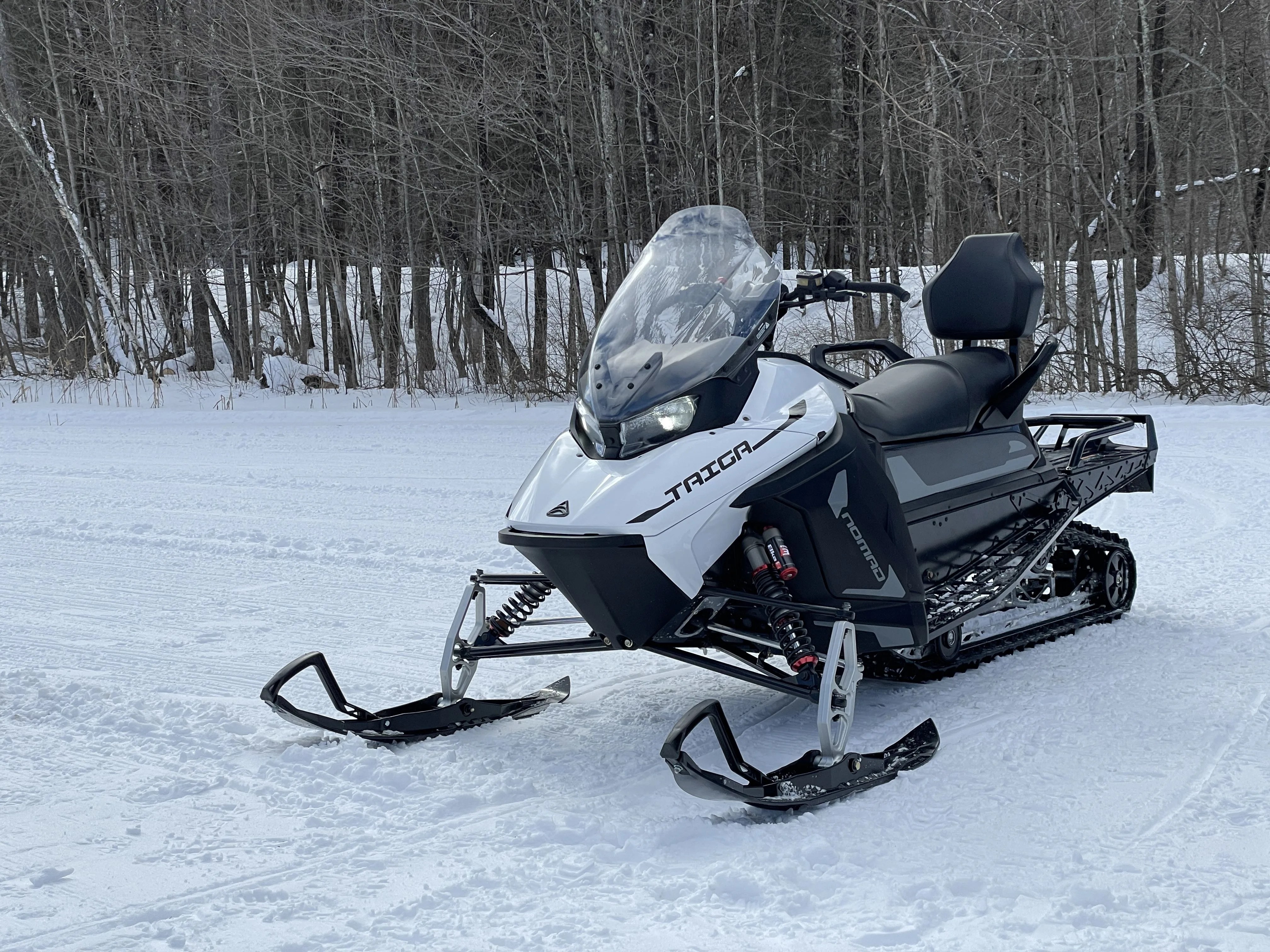The first time I ever rode aboard a snowmobile was in a long-lost era: the mid-to-late ’90s. Grunge was giving way to protoplasmic nu-metal on the radio dial, superhero movies were still a joke, and Bill Clinton was either denying having “sexual relations with that woman” or, well, having sexual relations with that woman. I was sitting pillion on the back, riding through the night with friends. The wind whipping my face, the snow blurring past beneath, the forest an endless reel of skeletal trees — it was as pure an expression of speed as anything I’d ever experienced.
On the flipside, also seared into my brain: the steady chainsaw roar and pungent wake of two-stroke engines, soiling the tranquility of the Vermont winter. Especially the latter: they say that if you’re not the lead dog, the view never changes; if you’re not the lead snowmobile, the smell certainly doesn’t.
Yet while enough time has passed since those halcyon days for nostalgia to grow thick like kudzu and resurrect the era’s trends, snowmobile technology has barely evolved over those decades. Plenty of models still use those two-stroke engines burning a noxious blend of oil and gasoline, engines that not only pollute far worse than the four-stroke motors found in cars and trucks, but also don’t last as long (and cost more to run, since you’re buying two fuels).
Enter Taiga. Never heard of them? You will. Especially if you’re ever planning to ride a snowmobile on vacation.
Taiga brings electric power (and advantages) to snowmobiles
 Will Sabel Courtney
Will Sabel CourtneyTaiga CEO and founder Sam Bruneau, for what it’s worth, was likely still learning his A-B-Cs back when I forged my first memory of snowmobiling; he graduated from McGill University back in 2015, and started Taiga with a couple fellow engineers soon thereafter. Like Mate Rimac, he’d worked on electric race cars; he knew what electric motors were capable of. Unlike the Croatian Rimac, however, Bruneau hails from the Great White North — so his mind went somewhere other than EV hypercars.



